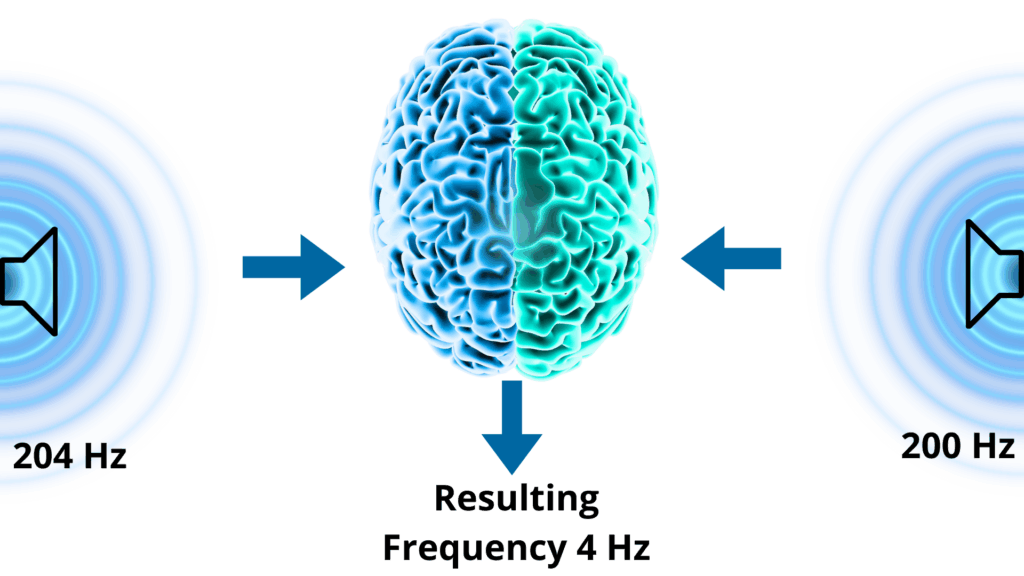Tinnitus is a persistent ringing, buzzing, or hissing in the ears that affects millions of people worldwide. For many, it’s not just a sound; it’s an emotional and neurological experience that can be deeply disruptive. If you’re navigating life with tinnitus, you’re not alone, and there are tools that can help.
Two powerful strategies are brainwave entrainment and sound therapy. These techniques don’t just mask the noise; they help retrain the brain’s response to tinnitus and create an environment more conducive to relaxation, focus, and healing. Let’s explore how they work, the types of sound used, and how to build an effective routine that suits your lifestyle.
What Is Brainwave Entrainment?
Brainwave entrainment is a method that uses rhythmic auditory stimuli to encourage the brain to synchronize its activity to specific frequencies. This can shift your brain into more relaxed and balanced states, which is particularly helpful for people with tinnitus who struggle with anxiety, stress, or sleep disturbances.
There are three main types of sound used in brainwave entrainment:
1. Binaural Beats
These require headphones and play two slightly different frequencies in each ear. Your brain perceives the difference as a third “beat,” which stimulates specific brainwave states. For example, theta waves are often used to calm anxiety and reduce tinnitus awareness, making them perfect for meditation or winding down before bed.
Since tinnitus is often experienced as a high-pitched sound, it’s best to avoid using binaural beats with higher frequencies, which can worsen the perception of it. Instead, listening to lower-frequency waves such as Alpha, Theta, or Delta can be much more soothing. Theta waves, in particular, promote deep relaxation and help mask tinnitus in a gentle, non-intrusive way.

2. Monaural Beats
Unlike binaural beats, monaural beats can be played through speakers. These tones are slightly stronger and are ideal for use during quiet tasks or moments of mental focus. For example, alpha waves promote a calm but alert state that can help manage tinnitus while working or reading.
3. Isochronic Tones
These are rhythmic pulses of sound that don’t require headphones. They are often used to induce deeper states of relaxation or sleep. Delta wave isochronic tones are excellent for those who find their tinnitus worsens at night.
Note: I recommend using brainwave entrainment specifically to help you fall asleep or stay asleep, as it can calm the mind and reduce nighttime tinnitus distress. However, during the day, I suggest using sound therapy instead, as it plays a more active role in supporting habituation to your tinnitus.
Sound Therapy for Tinnitus
While brainwave entrainment influences neurological activity, sound therapy focuses on masking tinnitus and helping the brain gradually habituate—or tune out—the sound. This process reduces the brain’s negative emotional response to tinnitus and promotes long-term relief.
Here are some commonly used sound types:
– White Noise
A broad-spectrum sound that mimics static or the hum of an appliance. White noise is effective for general masking and focus.
– Pink Noise
A softer, more balanced sound resembling steady rainfall or rustling leaves. Pink noise is great for relaxation, especially before bed.
– Brown Noise
Deeper and more grounding than white or pink noise. Brown noise has a calming effect and is helpful for those with heightened tinnitus sensitivity.
– Nature Sounds
Ocean waves, rain, forest sounds, and bird songs can help create a peaceful environment that reduces stress and supports emotional balance.
– Zen Therapy Sounds
Instruments like gentle gongs, wind chimes, or bamboo flutes are used in meditation settings to calm the mind and ease the emotional intensity of tinnitus.
How to Use Sound Therapy and Entrainment Effectively
To get the most out of these tools, it’s essential to use them intentionally and consistently. Here’s how:
1. Use the Right Equipment
- Binaural beats require headphones, so I recommend using them at night, when the main goal is tinnitus relief to support falling or staying asleep rather than promoting habituation.
- Monaural beats and isochronic tones can be used with headphones or speakers.
- If using sound therapy, avoid covering your ear canals by using earphones or headphones, as this may amplify tinnitus perception.Istead use speakers, sound generators, or devices that keep the ears open allow natural background sounds to assist with habituation.
2. Volume Matters
Set the volume of the sound just below your tinnitus level. Many mistakenly try to completely drown out the tinnitus, but this prevents the brain from adapting. The goal is to help your brain tune out the sound gradually, not to hide it entirely.
3. Create a Personalized Routine
Experiment to find what works best for you. Everyone responds differently, so finding sounds that are relaxing and pleasing to you is key.
Here’s a sample routine you can try:
- Morning: Brown noise to start your day with focus and calm.
- Afternoon: Nature sounds or white noise while working or reading.
- Evening: Pink noise or delta isochronic tones to wind down and support restful sleep.
4. Combine with Mindfulness or Relaxation
Enhance your sound therapy sessions by incorporating:
- Deep breathing
- Guided meditation
- Gentle stretching or yoga
- Mindfulness practices
This reinforces the brain’s relaxation response and helps break the anxiety-tinnitus cycle.
5. Be Consistent
Like any therapeutic approach, consistency is crucial. Aim for at least 15 to 30 minutes, ideally a couple hours a day, whether in one sitting or spread throughout the day.
Why These Tools Work
Tinnitus often triggers the brain’s fight or flight response, particularly because the sounds resemble alarms or sirens. This emotional response, governed by the amygdala, creates a loop of anxiety and heightened tinnitus awareness.
By introducing soothing, non-threatening sounds, brainwave entrainment and sound therapy help shift your brain from this high-alert state into a more relaxed mode. Over time, your brain begins to habituate to the tinnitus, meaning it stops reacting emotionally and instead pushes the sound into the background.
Conclusion
Living with tinnitus can be overwhelming, but you don’t have to face it without tools. Brainwave entrainment and sound therapy are evidence-based, customizable, and deeply empowering strategies that can improve your quality of life. By creating a personalized sound routine and practicing it consistently, you can retrain your brain to respond differently to tinnitus—and reclaim a sense of calm and control.
Explore different sounds, trust your instincts, and give your brain the time it needs to adapt. Relief is possible.



